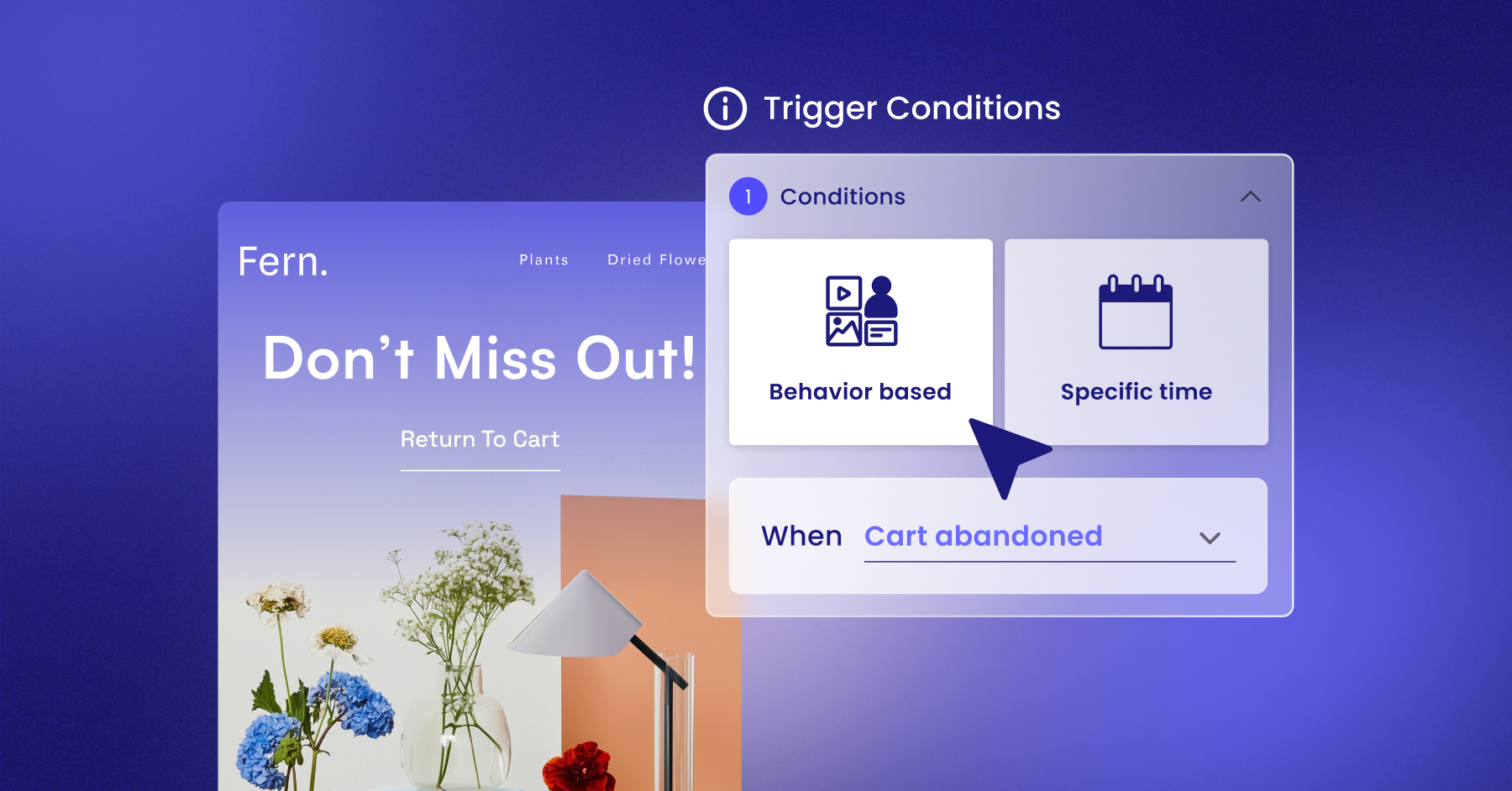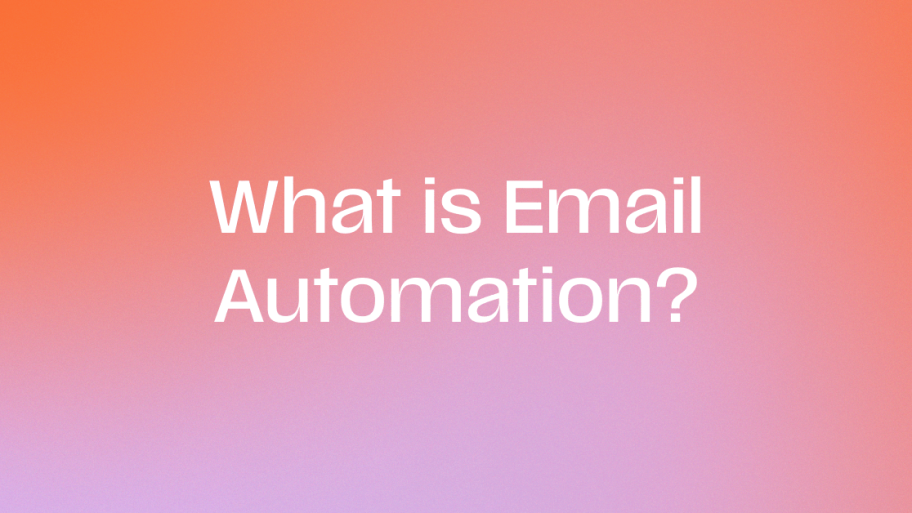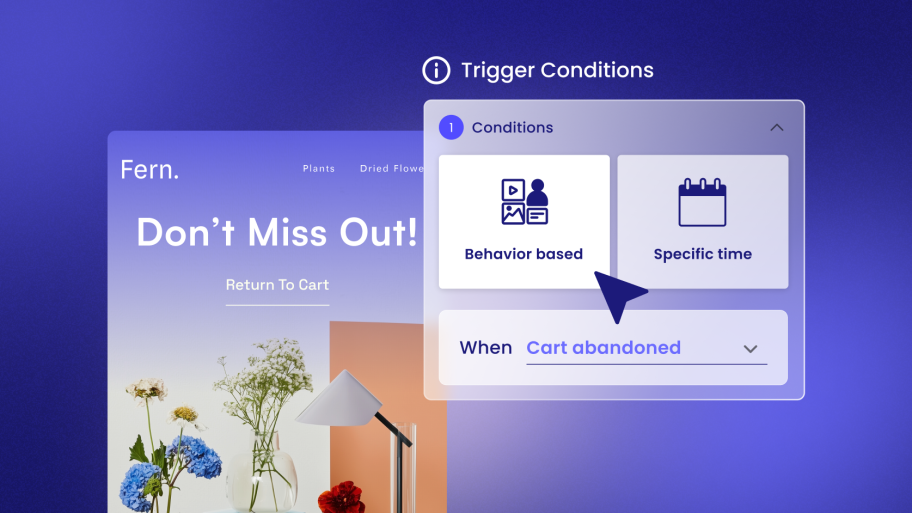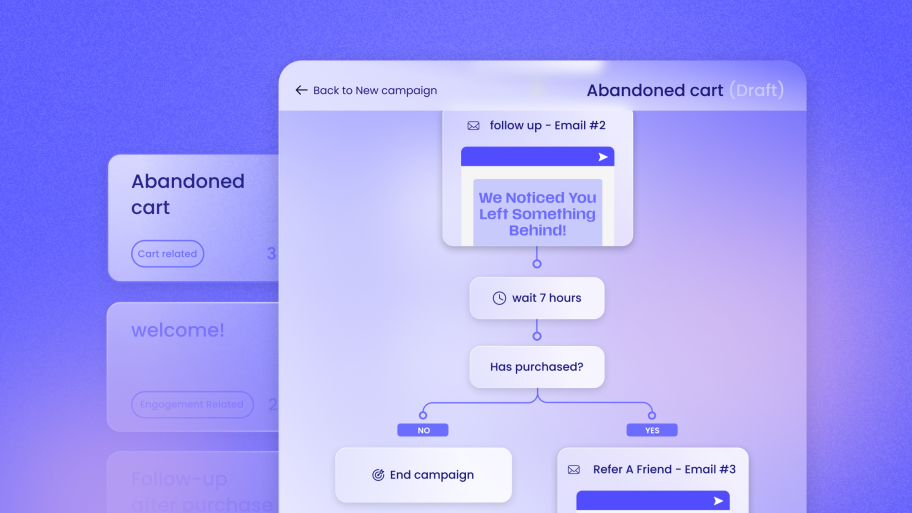For web creators, freelancers, and agencies, understanding the nuances of cart abandonment is no longer just a peripheral skill. It’s a core competency that allows you to deliver immense value to your clients. By tackling this issue, you can directly impact their bottom line, transforming their website from a simple online presence into a finely-tuned revenue engine.
This comprehensive guide will dive deep into what cart abandonment is, why it happens, and most importantly, what you can do about it. We’ll explore proven on-site optimization techniques and powerful off-site recovery strategies. You’ll learn how to leverage integrated communication tools to turn these missed opportunities into measurable growth, helping you build more profitable online stores and forge stronger, value-driven client partnerships that last.
Understanding Cart Abandonment: The “Why” Behind the Vanishing Shopper
At its core, cart abandonment is the term for when a potential customer adds items to their online shopping cart but leaves the website without completing the purchase. The metric used to track this is the cart abandonment rate, which is calculated by dividing the total number of completed purchases by the number of shopping carts created. The result is then subtracted from one and expressed as a percentage.
Globally, the average cart abandonment rate hovers around 70%, and for mobile users, it can climb even higher. That means for every ten customers who show strong purchase intent by adding a product to their cart, seven will leave without buying. This staggering number highlights a significant point of friction in the typical customer journey. Understanding the reasons behind this friction is the essential first step toward creating an effective solution.
Common Causes of Cart Abandonment
A shopper’s decision to leave a full cart is rarely random. It’s almost always a reaction to an unexpected obstacle, a moment of doubt, or a point of friction in the buying process. As a web creator, your job is to identify and eliminate these obstacles. Let’s break down the most common culprits.
- Unexpected Costs: This is consistently the number one reason shoppers abandon their carts. When a customer proceeds to checkout and is suddenly confronted with high shipping fees, taxes, or other surprise charges, it creates a sense of “sticker shock.” The price they had in their head no longer matches the final total, which can feel deceptive and immediately break the trust you’ve worked to build.
- Complicated Checkout Process: Modern consumers have been conditioned to expect fast, easy online experiences. A checkout process that is long, confusing, or requires too much effort is a major deterrent. One of the biggest offenders is forcing users to create an account before they can make a purchase. This adds an extra, often unwelcome, step that many potential buyers are simply not willing to take. Every unnecessary form field or confusing step increases the likelihood that they’ll give up and go elsewhere.
- Lack of Trust: Handing over credit card information online requires a significant level of trust. If a website appears unprofessional, outdated, or lacks clear security signals, customers will hesitate. Essential trust signals include SSL certificates (the padlock icon in the browser), visible logos of accepted payment methods like Visa or PayPal, and clear, easily accessible return policies. Without these reassurances, shoppers may question the legitimacy of the store and the safety of their personal data.
- Poor Performance and Technical Glitches: Website performance is crucial. A slow-loading checkout page or a technical error during the payment process can be incredibly frustrating for users. In an era of high-speed internet, patience for lagging websites is virtually nonexistent. If a payment gateway fails to load or a button doesn’t work, the sale is almost certainly lost, along with the customer’s confidence in the brand.
- Comparison Shopping: Many shoppers use the cart as a tool for organization or as a “wishlist” while they compare prices and products across different websites. They may add items to their cart on several sites to easily see the final cost, including shipping, with the intention of only buying from the one that offers the best overall deal.
- Limited Payment Options: Today’s consumers use a variety of payment methods. If a store only accepts credit cards and doesn’t offer popular alternatives like PayPal, Apple Pay, or Google Pay, it can be a dealbreaker for customers who prefer the convenience and security of these services.
By systematically analyzing a client’s website and checkout process against these common issues, you can begin to pinpoint the specific friction points that are causing them to lose sales. This diagnosis is the foundation of any successful cart abandonment strategy.
The Real Cost of Abandoned Carts
The financial impact of cart abandonment is far greater than just the immediate loss of a single sale. It represents a massive drain on potential revenue and a significant blow to the return on investment (ROI) of marketing efforts.
Think about the journey that led the customer to the cart. Your client likely invested money in advertising, content marketing, social media campaigns, or search engine optimization (SEO) to attract that visitor. They successfully guided them through the marketing funnel, from awareness to consideration to the point of purchase. When that customer abandons their cart, the entire cost of that acquisition is effectively wasted.
Let’s put this into perspective with a simple example. Imagine your client’s WooCommerce store generates $50,000 in monthly sales and has a typical cart abandonment rate of 70%. This means that for every $50,000 in completed sales, there’s roughly $116,000 in potential revenue being left in abandoned carts. Recovering just 10% of that lost revenue would add over $11,600 in sales each month—nearly $140,000 in additional revenue per year.
This is the kind of tangible, bottom-line impact you can deliver as a web creator. By shifting your focus from just building websites to optimizing them for conversion, you can provide a high-value service that generates clear, measurable results and solidifies your role as an indispensable partner in your client’s growth.
Strategies to Reduce and Recover Abandoned Carts
Now that we have a firm grasp of the problem, let’s explore the solutions. A successful cart abandonment strategy is a two-pronged attack. First, you need to optimize the on-site experience to prevent as many shoppers as possible from leaving in the first place. Second, you must implement strategic off-site recovery campaigns to re-engage the shoppers who do leave and bring them back to complete their purchase.
On-Site Optimization: Preventing Abandonment Before It Happens
The most effective way to combat cart abandonment is to address the root causes directly on the website. This involves creating a checkout experience that is as seamless, transparent, and trustworthy as possible.
Simplify the Checkout Funnel
Simplicity is key. Your goal should be to get the customer from the cart to the “Thank You” page with the least amount of friction.
Offer Guest Checkout As mentioned, forcing account creation is a major conversion killer. Always provide a prominent guest checkout option. This simple choice respects the customer’s time and removes a significant barrier. You can always prompt them to create an account after the purchase is complete by offering to save their information for next time. This approach feels helpful rather than mandatory.
Streamline with a Clear Process Whether you choose a one-page or multi-page checkout, clarity is paramount.
- One-Page Checkout: This layout puts all necessary fields (shipping, billing, payment) onto a single screen. For some users, this can feel faster and more transparent since they can see the entire process at a glance.
- Multi-Page Checkout: This approach breaks the checkout into logical, digestible steps, often with a progress bar at the top (e.g., Shipping > Payment > Review). This can reduce the feeling of being overwhelmed and clearly communicates to the user how close they are to completion.
The best approach can vary, so consider A/B testing both formats to see which one performs better for your client’s specific audience.
Build Unshakeable Trust and Transparency
Customers will not enter their payment details on a site they don’t trust. Building confidence throughout the entire shopping journey is non-negotiable.
Display Trust Signals Prominently Visibly display security badges (like SSL certificates), logos of accepted payment methods (Visa, Mastercard, PayPal, etc.), and any relevant industry awards or certifications. These small visual cues provide powerful reassurance that the site is legitimate and that their data will be handled securely.
Eliminate Cost-Related Surprises Be upfront and transparent about all costs. The cart page should include a shipping calculator so customers can see their estimated total before they start the checkout process. This simple feature prevents the sticker shock that drives so many customers away.
Leverage Social Proof Integrate customer reviews, star ratings, and even user-submitted photos directly on product pages and throughout the checkout process. Seeing that other people have purchased and enjoyed the products provides a powerful final nudge for hesitant shoppers. It builds confidence and minimizes the perceived risk of making a purchase.
Optimize Relentlessly for Mobile
A significant—and growing—portion of online shopping occurs on mobile devices, where abandonment rates are even higher. A mobile-first approach to checkout design is therefore essential.
- Thumb-Friendly Design: Ensure that all buttons are large and easy to tap and that form fields are simple to fill out on a small screen. Use features like auto-fill and address lookup to minimize typing.
- Mobile-Native Payment Options: Integrate digital wallets like Apple Pay, Google Pay, and PayPal. These options allow users to complete a purchase with a single tap or biometric scan, dramatically reducing the effort required and boosting conversion rates.
By diligently applying these on-site optimization techniques, you can significantly reduce the number of shoppers who abandon their carts due to frustration, confusion, or doubt.
Off-Site Recovery: Winning Back Lost Customers with Automated Communication
Even with a perfectly optimized website, some shoppers will inevitably get distracted or leave for other reasons. This is where your off-site recovery strategy comes into play. By using automated communication channels like email and SMS, you can effectively re-engage these high-intent customers and entice them back to finish what they started.
This is where an integrated communication toolkit becomes an invaluable asset for web creators. Instead of grappling with disconnected third-party platforms, a WordPress-native solution allows you to build, manage, and track these critical recovery workflows seamlessly from a familiar environment.
The Power of Automated Abandoned Cart Emails
Abandoned cart emails are one of the single most effective tactics in ecommerce marketing. These automated messages are triggered when a user leaves items in their cart, serving as a timely and personalized reminder of what they were considering. A well-crafted email series can recover a significant percentage of otherwise lost revenue.
A typical and highly effective abandoned cart email sequence consists of three parts:
- Email 1 (Sent 1-4 hours after abandonment): This is a gentle, customer-service-oriented reminder. The tone should be helpful, not pushy.
- Subject Line Idea: “Did you forget something?” or “Your [Brand Name] cart is waiting!”
- Content: Feature large, high-quality images of the items left in the cart. Include a clear, prominent call-to-action (CTA) button that says “Return to Your Cart” and links directly back to their pre-filled checkout page.
- Email 2 (Sent 24 hours after abandonment): This email introduces a light sense of urgency or offers additional value.
- Subject Line Idea: “Your items are selling fast!” or “Still thinking it over? Let us help.”
- Content: You might mention that the items are popular and could sell out. This is also a great place to introduce social proof by including star ratings or a snippet from a positive customer review for one of the products in their cart. Alternatively, you could offer help by linking to an FAQ page or providing a customer service contact.
- Email 3 (Sent 3-5 days after abandonment): This is often the final attempt and can include a compelling incentive to seal the deal.
- Subject Line Idea: “A special offer just for you” or “Take 10% off your [Brand Name] order.”
- Content: Offer a time-sensitive discount or free shipping. This can be the final push a price-sensitive customer needs to complete their purchase. Make the offer clear and the expiration date prominent to encourage immediate action.
SMS for Immediate and High-Impact Engagement
While email is the workhorse of recovery, SMS (text message) marketing offers a level of immediacy that is unmatched. With open rates often exceeding 98%, an SMS message is almost guaranteed to be seen within minutes of being sent.
Because SMS is such a personal channel, it must be used strategically and with full consent. For cart abandonment, a single, well-timed SMS can be incredibly effective.
- Example Message: “Hi [First Name], you left some great items in your cart at [Store Name]! Your cart is saved and ready when you are. Complete your purchase here: [Direct Link to Cart]”
A WordPress-native tool that includes both email and SMS capabilities allows you to create sophisticated, multi-channel flows. For instance, you could send the first email reminder, and if the customer doesn’t convert within a few hours, follow up with an SMS message for maximum visibility.
As a web creator, offering to build and manage these automated recovery funnels is a powerful way to elevate your services. You move beyond being a simple website builder and become a strategic partner dedicated to driving your client’s growth.
The Ultimate Toolkit: Choosing the Right Marketing Tools for WordPress
To effectively implement these advanced cart abandonment strategies, you need a powerful and efficient set of tools. The market is saturated with options, but for web creators who live and breathe WordPress, choosing a solution that is built for the WordPress ecosystem offers profound advantages.
Why a WordPress-Native Solution Is a Game-Changer
Using a tool that is designed from the ground up to work with WordPress and WooCommerce eliminates a whole class of problems that commonly arise from trying to bolt on external marketing platforms.
- Seamless and Effortless Integration: A native tool is built to work perfectly with WordPress right out of the box. This means you can forget about the headaches of managing complex APIs, dealing with frustrating data-syncing errors, or troubleshooting plugin conflicts that can slow down your client’s site.
- A Familiar and Intuitive Interface: The user interface is often designed to mimic the familiar WordPress dashboard, which dramatically lowers the learning curve for both you and your client. This makes ongoing management simpler and reduces the need for extensive training or support.
- A Truly Unified Dashboard: You can manage everything—email campaigns, SMS messages, automation flows, and performance analytics—from one central location: the WordPress admin panel. This consolidated approach streamlines your workflow and saves you from having to constantly switch between different platforms.
- Optimized Performance: Because it’s built specifically for the WordPress environment, a native toolkit is generally more lightweight and efficient. This helps ensure that your powerful marketing features don’t come at the cost of your client’s site speed and performance.
Send by Elementor: The Communication Toolkit Built for Web Creators
Send by Elementor is an all-in-one communication toolkit that was created specifically for the needs of web creators and WooCommerce stores. It provides a comprehensive suite of tools that allows you to tackle cart abandonment and execute sophisticated marketing strategies directly from within the WordPress environment you already know and trust.
Key Features for Dominating Cart Abandonment Recovery
Let’s examine how Send by Elementor’s features directly empower you to implement the strategies we’ve discussed.
- Marketing Automation Flows: Send comes equipped with pre-built, fully customizable automation workflows for critical scenarios like abandoned carts. This means you can launch a best-practice recovery campaign in a matter of minutes, not hours. The intuitive visual builder allows you to easily create multi-step email and SMS sequences that run on autopilot.
- Integrated Email & SMS Marketing: The platform consolidates both email and SMS into a single, cohesive toolkit. This enables you to design powerful, multi-channel recovery campaigns that reach customers on their preferred channel, at the right time.
- Advanced Audience Segmentation: Not all abandoning shoppers are the same. Send’s robust segmentation capabilities allow you to create highly targeted and personalized campaigns. For instance, you could design a unique flow for high-value carts, send a special offer to first-time shoppers, or create a tailored message for returning VIP customers.
- Real-Time, Demonstrable ROI: One of the most significant challenges for web creators is clearly demonstrating the value of their marketing efforts. Send by Elementor solves this with clear, real-time analytics that directly attribute revenue to your campaigns. You can generate straightforward reports that show your client exactly how many carts were recovered and how much revenue was generated, making it incredibly easy to prove your ROI.
By leveraging a comprehensive, native tool like Send, you fundamentally change your relationship with your clients. You are no longer just delivering a website; you are delivering a growth engine.
Step-by-Step Guide: Launching an Abandoned Cart Flow with Send by Elementor
Let’s walk through just how simple it is to set up a powerful, automated abandoned cart recovery campaign using a WordPress-native tool like Send by Elementor.
Step 1: Install and Connect The entire process begins and ends within the WordPress dashboard. There’s no need to create an account on a separate platform or navigate a complex and unfamiliar setup process. You simply install the tool and connect it to your store.
Step 2: Choose a Pre-Built Automation Template Navigate to the automation section within your dashboard and select the “Abandoned Cart” template. This professionally designed workflow is based on proven industry best practices and gives you a powerful starting point. The default flow will likely include:
- A trigger that activates when a customer with a known email address abandons a cart.
- A time delay (e.g., “Wait 1 hour”).
- An action to “Send Email #1.”
- A second time delay (e.g., “Wait 23 hours”).
- A second action to “Send Email #2.”
Step 3: Customize Your Email Messages Using the intuitive drag-and-drop email builder, you can fully customize the content of each message.
- Personalize the Content: Use dynamic tags to automatically insert the customer’s name and high-quality images of the exact products they left behind.
- Match the Client’s Branding: Effortlessly apply your client’s brand colors, fonts, and logo to ensure every communication feels like a seamless extension of their website.
- Add a Strategic Incentive: In the second or third email of the series, you can easily add a unique, time-sensitive discount code to provide that extra nudge a customer might need.
Step 4: Seamlessly Incorporate SMS Want to create a true multi-channel experience? Simply drag the SMS action from the menu onto your automation canvas. You can place it after the first email or use it as an alternative follow-up. Customize the text message to be short, direct, and helpful, and include a link that takes the customer straight back to their cart.
Step 5: Activate, Monitor, and Report Once you are satisfied with your recovery flow, you simply toggle it to “active.” The system will immediately begin monitoring for abandoned carts and sending your automated messages.
You can then track the performance of your campaign directly from the analytics dashboard in WordPress. Monitor open rates, click-through rates, and most importantly, the revenue recovered. This hard data is invaluable for your client reports and for continuously optimizing your strategy.
Other Tools in the Ecommerce Ecosystem
While a fully integrated, WordPress-native solution like Send by Elementor offers the most streamlined experience, it is helpful to be aware of the other types of tools that exist in the broader market. Many businesses create their marketing technology “stack” by patching together various specialized tools.
Standalone Email and SMS Platforms
These platforms focus exclusively on email and SMS marketing. While they often provide deep feature sets, they operate outside the WordPress environment. This means they require complex integrations that can be prone to breaking, and they often lead to data silos where customer information is not easily shared across systems.
Loyalty, Referral, and Review Programs
These tools are designed to foster customer retention and build social proof. Loyalty and referral programs incentivize repeat purchases, while review platforms help collect and display user-generated content. While incredibly valuable, they are specialized and must be connected with other communication tools to execute a comprehensive strategy like cart abandonment recovery.
The Clear Advantage of a Unified Toolkit
While using specialized point solutions is a viable approach, managing multiple disparate tools can quickly become complex, time-consuming, and expensive. Each platform has its own learning curve, its own monthly subscription fee, and its own isolated set of data. This fragmentation can lead to a disjointed customer experience and a significant administrative burden for you or your client.
A unified, WordPress-native toolkit like Send by Elementor is designed to eliminate this complexity. It consolidates all the essential communication functions—email, SMS, automation, segmentation, and analytics—into a single, powerful, and seamlessly integrated platform. This not only streamlines your workflow but also empowers you to create more sophisticated and cohesive marketing campaigns that drive superior results.
Final Thoughts: Evolving from Web Creator to Indispensable Growth Partner
Cart abandonment is far more than a simple website metric; it is a critical moment of truth in the customer journey where a vast amount of potential revenue is either won or lost. For today’s web creators, this challenge presents a profound opportunity to deliver tangible, bottom-line value that extends far beyond the initial scope of a website build. By mastering the art of diagnosing the causes of abandonment and implementing effective, automated recovery strategies, you can directly fuel your client’s financial growth.
The key to unlocking this opportunity lies in choosing the right tools. While a multitude of options exist, a communication toolkit that is
born for WordPress and built for WooCommerce offers unparalleled advantages in simplicity, integration, and operational efficiency. A platform like
Send by Elementor empowers you to design and deploy sophisticated, revenue-generating marketing campaigns without the steep learning curve or technical friction associated with traditional, external marketing platforms.
By integrating these capabilities into your service offerings, you can:
- Dramatically expand your value proposition by including high-demand marketing automation services.
- Build a sustainable, recurring revenue stream through ongoing campaign management and optimization retainers.
- Forge deeper, more resilient client relationships by delivering clear, measurable results that directly contribute to their success.
Ultimately, learning to effectively combat cart abandonment is about more than just recovering a few lost sales. It’s about demonstrating your strategic expertise, proving your indispensable value, and fundamentally evolving your role from that of a web creator to that of a trusted and essential growth partner for your clients.




